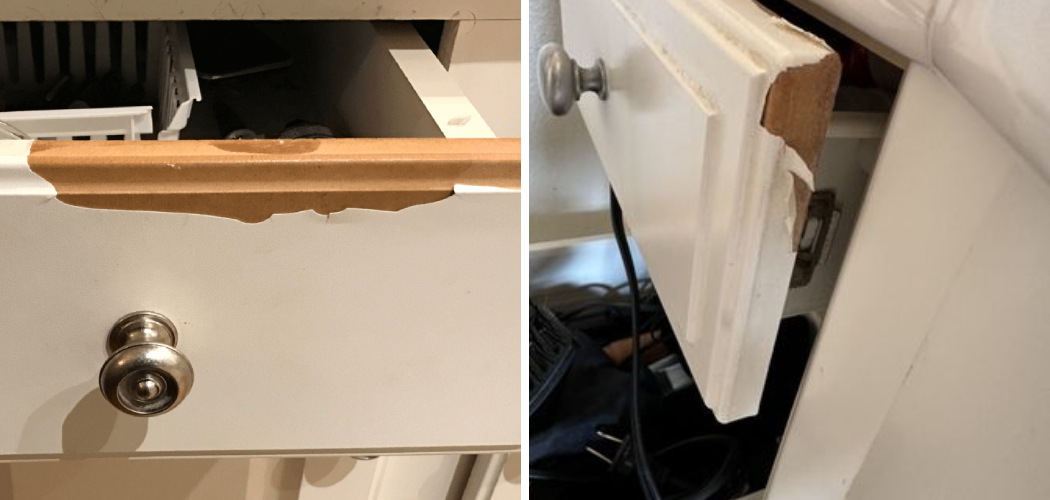Thermofoil cabinets are popular for homeowners due to their affordability, versatile design options, and durability. These cabinets are made by applying a thin layer of vinyl onto medium-density fiberboard (MDF), creating a smooth and resilient finish. However, despite their advantages, thermofoil cabinets are not without their challenges. Common issues include peeling and bubbling due to heat or moisture exposure, unsightly scratches from regular wear, and discoloration caused by harsh cleaners.
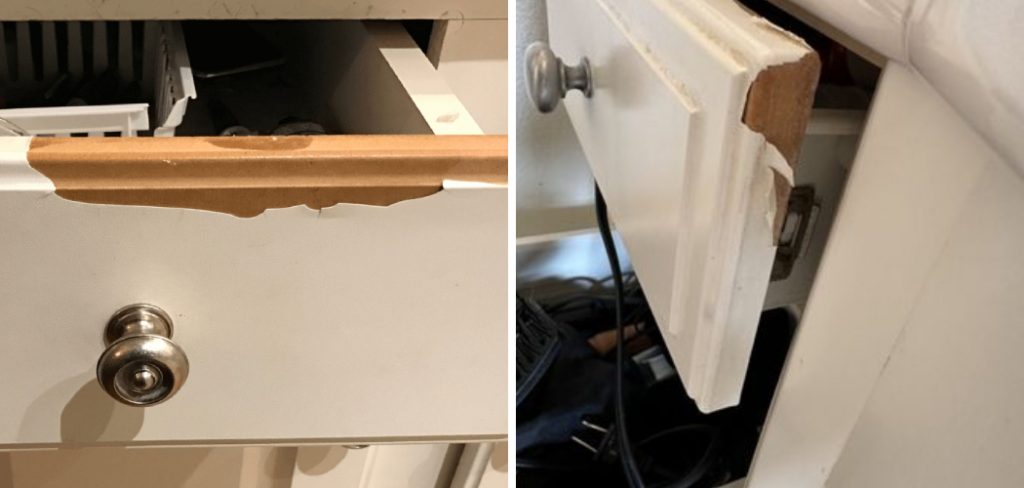
This article addresses these problems by providing guidance on how to fix thermofoil cabinets, ensuring they are restored to their original aesthetic. By following the solutions presented here, homeowners can effectively repair damages and prolong the life of their cabinets, revitalizing their kitchen’s appearance without needing a costly replacement.
Understanding Common Thermofoil Cabinet Issues
Peeling and Bubbling
Peeling and bubbling are prevalent issues affecting thermofoil cabinets, often occurring due to exposure to heat or moisture. The thin vinyl layer can begin to peel away from the medium-density fiberboard (MDF) underneath when subjected to excessive heat, such as near ovens or other heat sources. Moisture exposure can further compromise the adhesive, causing bubbles to form beneath the vinyl surface. These problems typically manifest near cabinet edges or nearby appliances where common temperature fluctuations undermine the cabinets’ aesthetic appeal and structural integrity.
Surface Scratches and Discoloration
Surface scratches and discoloration are also common problems for thermofoil cabinets. Scratches can easily occur through daily use or when harsh cleaning chemicals are applied, breaking the protective vinyl layer and exposing the MDF base. Discoloration often results from prolonged exposure to sunlight or chemical interactions that can fade or change the vinyl’s coloration. These defects detract from the cabinets’ visual appeal and can shorten their lifespan by exposing them to additional wear and environmental stressors. Addressing these issues promptly can help maintain the appearance and durability of thermofoil cabinets.
How to Fix Thermofoil Cabinets Fixing Peeling Thermofoil
Re-Adhering Small Peeling Sections

When dealing with minor peeling on thermofoil cabinets, using contact cement or a suitable adhesive can efficiently resolve the issue. Begin by cleaning the area to remove any dust or grime, ensuring a better adhesive bond. Apply a thin, even layer of adhesive on both the cabinet surface and the back of the peeling thermofoil. Allow the adhesive to become tacky, following the manufacturer’s guidelines. Once tacky, carefully press the thermofoil back into place, ensuring the edges align perfectly. To secure the bond, use a clamp or place a weight on top of the repaired area, holding it firmly for the recommended drying time. This method will help restore the cabinet’s appearance and prevent further peeling.
Repairing Large Peeling Areas
For extensive peeling sections, gently remove the loose thermofoil to reveal the affected area. Clean any residue or debris from the cabinet surface to prepare it for re-adhesion. Apply a new adhesive layer evenly across the entire exposed section, adhering to manufacturer instructions. Carefully position the thermofoil back in its original place, ensuring all edges align correctly. Utilize a squeegee or roller to press down the thermofoil, beginning from the center and moving outwards to eliminate any trapped air bubbles. This step is crucial in achieving a smooth, bubble-free finish. Finally, allow the adhesive to cure completely before using the cabinet, ensuring a secure and seamless repair that enhances the longevity and appearance of the thermofoil cabinets.
How to Fix Thermofoil Cabinets Fixing Bubbling in Thermofoil
Using a Syringe to Inject Adhesive
One effective method to fix bubbling in thermofoil is to use a syringe to inject adhesive directly into the bubble. Start by cleaning the area around the bubble to ensure it is free of dust and debris. Carefully puncture the bubble’s center with a fine needle or the syringe tip. Slowly inject a small amount of adhesive underneath the lifted thermofoil, ensuring that the adhesive spreads evenly.
After injection, use a squeegee or a similar flat tool to press down firmly from the bubble’s center outward. This action helps distribute the adhesive and eliminates trapped air, creating a flat, seamless repair. Allow the adhesive to dry completely according to the manufacturer’s instructions for a durable bond.
Applying Heat to Re-Bond the Thermofoil
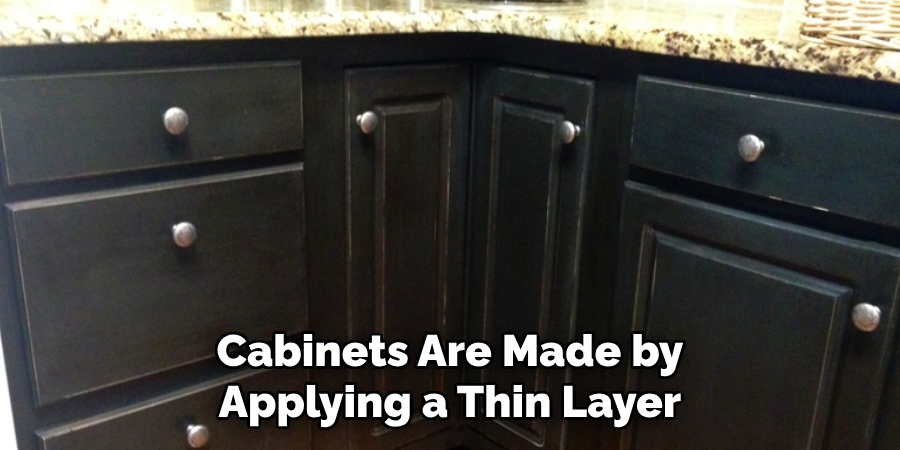
Using controlled heat can also help in re-bonding bubbled thermofoil. Begin by cleaning the area, then use a heat gun or hairdryer on a low setting to gently warm the affected section. Keep the heat source moving to apply warmth evenly, preventing any part from overheating or scorching. Once the thermofoil becomes pliable, press down the bubbled area using a squeegee or cloth to reattach it to the surface beneath. Continue applying pressure until the thermofoil cools and adheres firmly. This method ensures a smooth, undamaged finish by re-bonding the thermofoil effectively while averting further damage through careful heat application.
Repairing Surface Scratches and Discoloration
Fixing Light Scratches with Repair Kits
To address light scratches on thermofoil cabinets, repair kits or furniture markers offer an effective solution. These kits typically contain a variety of colored wax sticks or markers designed to match wood tones. Begin by selecting a color that closely resembles your cabinet’s finish. Apply the wax or marker over the scratch, using a soft cloth to gently blend the repaired area with the surrounding surface. Ensure a seamless blend by working in small sections and gradually layering the color for an even appearance. This straightforward approach can help restore the cabinet’s look without extensive repairs.
Addressing Discoloration or Fading
To tackle discoloration or fading in thermofoil cabinets, thoroughly clean the affected area to remove surface dirt and oils. Once clean, use fine-grit sandpaper to lightly sand the discolored sections, preparing them for refinishing. This smoothens the surface, enhancing the adhesion of touch-up products. After sanding, use color-matched paint to touch up the faded areas, ensuring the paint color matches the cabinet’s original finish. Apply the paint in thin, even layers, allowing each coat to dry completely before adding another. This method provides a refreshed look, restoring the cabinet’s aesthetic and prolonging its lifespan.
Replacing Severely Damaged Thermofoil Panels
Removing the Old Thermofoil
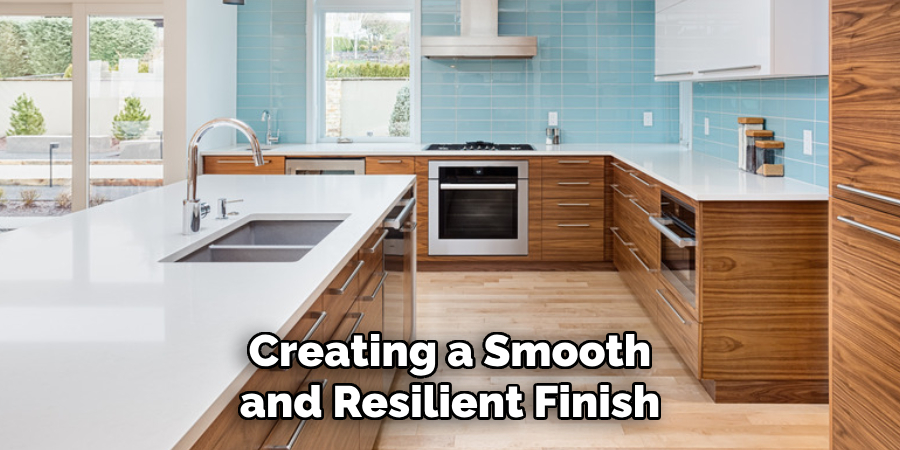
Replacing thermofoil panels might be the most effective solution when they are severely damaged. Begin by carefully peeling off the old thermofoil. Employ a gentle approach by lifting the edges and gradually pulling the material away from the surface. Utilizing a heat gun can facilitate this process by softening the adhesive, making it easier to peel without damaging the underlying surface. Use the heat gun on a low setting and keep it moving evenly across the panel to prevent scorching. As the thermofoil loosens, continue to peel until the entire panel is removed, ensuring no adhesive or small pieces remain.
Applying New Thermofoil or Veneer
Once the damaged thermofoil is removed, it’s time to apply a new layer. Cut the new thermofoil or peel-and-stick veneer to match the dimensions of the existing cabinet. Pay attention to the edges and corners for a precise fit. Begin the application at one edge, gradually smoothing the new layer across the surface to prevent air bubbles. Using a squeegee or roller can help achieve a smooth, gap-free finish. Press firmly across the entire panel to ensure maximum adhesion. This method restores the cabinet’s appearance and maintains its durability by seamlessly blending the new material with the existing finish.
Preventing Future Thermofoil Damage
Proper Cleaning Techniques
To maintain the integrity of thermofoil cabinets, it’s crucial to use gentle, non-abrasive cleaners. Opt for mild solutions, such as soap mixed with water, to avoid scratching or degrading the surface. Avoid using harsh chemicals like bleach or ammonia, which can weaken the thermofoil layer and lead to peeling or discoloration. Regular cleaning with a soft cloth or sponge ensures the cabinets remain in excellent condition without compromising the material.
Protecting Cabinets from Heat and Moisture
Thermofoil cabinets can suffer damage from high temperatures and moisture exposure. To prevent this, heat shields such as stoves and ovens should be incorporated around heat sources. This protects the cabinets from direct heat and prolongs their lifespan. Additionally, protective barriers should be placed between cabinets and appliances that emit steam. These small adjustments help maintain the thermofoil’s finish by mitigating the risks posed by excessive heat and moisture.
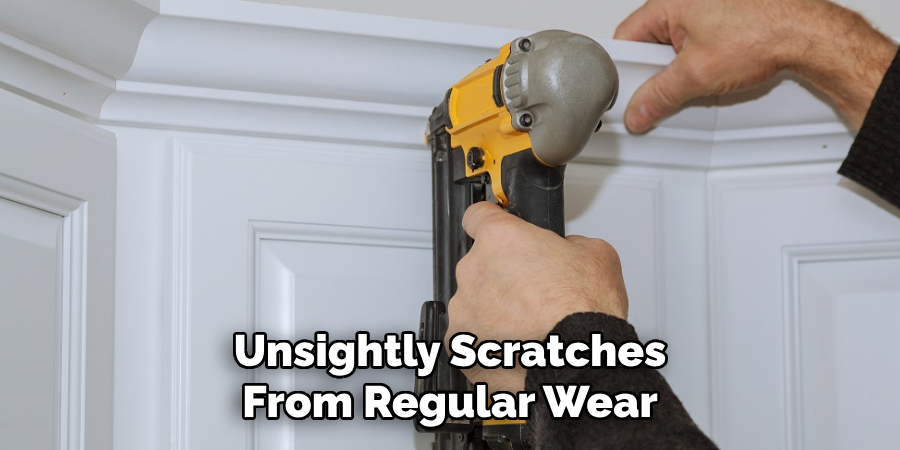
Conclusion
In summary, knowing how to fix thermofoil cabinets involves several key techniques. For peeling and bubbling, apply adhesive or heat to rebond the surface, while light scratches can be concealed using repair kits. Address discoloration through cleaning, sanding, and touch-up paint. These straightforward methods effectively tackle various common issues. By addressing minor problems promptly, you can prevent more significant damage and extend the cabinets’ lifespan. Repairing thermofoil cabinets revitalizes their appearance and keeps them looking new, preserving both function and aesthetic appeal in your kitchen or bathroom spaces.

